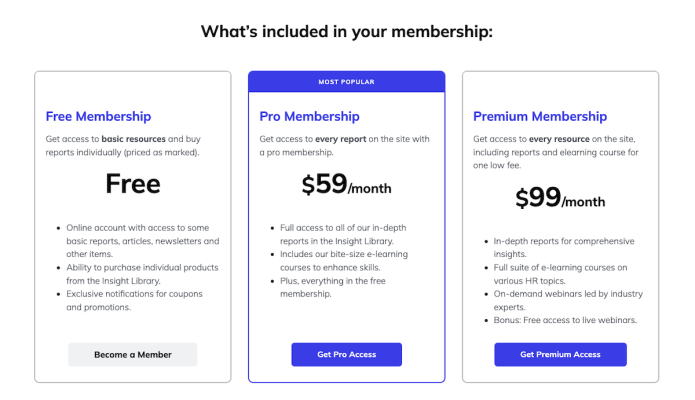
Launching a membership website is an exciting way to generate recurring income while building a loyal community around your content, expertise, or services. Whether you're offering online courses, coaching, or a private community, this step-by-step guide will help you get started.
Step 1: Define Your Membership Model
Before building your site, determine what type of membership model best suits your business. Some popular options include:
- Content Access – Blog posts, videos, or resources.
- Online Courses – Structured lessons and quizzes or certifications.
- Community-Based – Private forums, groups, or mastermind sessions.
- Service-Based – Coaching, consultations, or personalized guidance.
Step 2: Choose a Membership Platform
Ensure your membership platform is fully capable of managing subscriptions, content access, and payments. Some top membership site platforms include:
- MemberSpace – Flexible and integrates with existing websites.
- Podia – Great for online courses and digital products.
- Kajabi – All-in-one platform for content, marketing, and automation.
- SubHub – User-friendly platform for monetizing content and 5-star customer support.
- Thinkific – Ideal for course creators.
- Mighty Networks – Best for community-driven memberships.
Step 3: Create Your Content & Benefits
Your content is the foundation of your membership site. Plan and create high-value content that will keep your members engaged and subscribed.
- Articles & Videos – Provide valuable insights and information. Be sure to make it clear to members and visitors alike what topics are included in your content, how to sign up for it, and how to access it once subscribed.
- Courses & Webinars – Courses are a great way to organize disparate content. Create as many as you like, and organize them into modules or sections with any number of lessons. Choose to sell courses on their own or as part of a recurring subscription.
- Downloads & Resources – E-books, worksheets, and guides are excellent accompaniments to course or article content.
- Member Discounts & Perks – Utilize coupon codes, promo codes for discounts, and exclusive or early access to content through a premium membership.
Step 4: Set Up Pricing & Payment Processing
Decide on pricing tiers and payment options:
- Monthly or Annual Memberships – With Paypal and Stripe, you have several choice for different billing cycles, but monthly or annual are the most popular. Business owners often give a discount as an incentive for an annual membership.
- One-Time Fees – Non-recurring subscriptions can be ideal for lifetime access, or if you want members to manually renew once their subscription has expired. Most often, stand-alone courses are sold this way, or a bundle of courses through a non-recurring subscription plan.
- Free Trial or Freemium Model – Attract members by offering free introductory content or a free trial for a limited time, after which the recurring payment begins.
Use trusted payment gateways like Stripe and PayPal to handle transactions securely.
Step 5: Build & Design Your Membership Site
Ensure your website is easy to navigate and provides a great user experience. Focus on:
- User-Friendly Navigation – Ensure your visitors and members can get to the content their interested in from the homepage. You can use content links and links via the top navigation.
- Mobile Optimization – Make sure your site works well on desktop and mobile.
- Branding & Aesthetics – Often membership website owners have a flagship site alongside their membership site. Be sure to maintain consistency in visuals and messaging.
Step 6: Market Your Membership & Attract Members
Promoting your membership site is key to growing your community. These are some tried and true strategies:
- Email Marketing – Build an email list and send regular updates.
- Social Media Promotion – Share valuable snippets to attract interest.
- SEO & Blogging – Drive organic traffic through optimized content.
- Referral & Affiliate Programs – Encourage members to bring in new sign-ups.
Step 7: Engage & Retain Your Members
Keeping members engaged ensures long-term success. Implement strategies such as:
- Regular Content Updates – Keep delivering fresh, valuable content.
- Community Interaction – Host Q&A sessions, forums, and group discussions.
- Exclusive Perks & Bonuses – Offer special discounts, early access, or exclusive events.
- Gather Feedback – Conduct surveys and listen to member needs.
Step 8: Track Performance & Optimize
Monitor key metrics to improve your membership site over time:
- Member Retention Rate – Track how long members stay subscribed.
- Engagement Levels – See which content gets the most interaction. You can use Google Analtyics for this.
- Revenue & Growth Trends – Analyze income and adjust pricing or offers accordingly.
Start Building Your Membership Site Today!
With the right strategy, tools, and consistent effort, your membership website can become a thriving source of income and community. Ready to take the leap? Choose a platform, create valuable content, and start growing your membership today!









